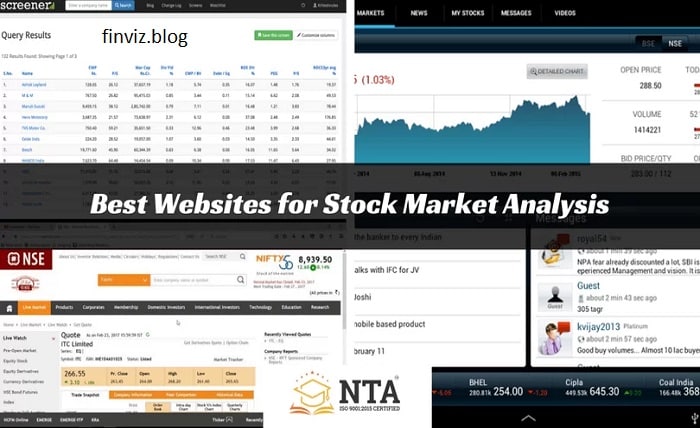Introduction
Stock websites have revolutionized the way individuals and businesses source high-quality media. These platforms provide a vast array of images, videos, and audio files that can be used for various purposes, from marketing campaigns to personal projects. In this comprehensive guide, we will explore everything you need to know about stock websites, their benefits, how to choose the right one, and much more.
What Are Stock Websites?
Stock websites are online platforms that offer a vast collection of media files, including images, videos, illustrations, and audio clips. These files are created by professional photographers, videographers, and artists and are made available for download, often for a fee. The primary purpose of stock websites is to provide high-quality, royalty-free media that can be used in various projects without the need for creating original content.
Benefits of Using Stock Websites
Using stock websites offers numerous advantages. First, they save time and resources by providing instant access to a wide range of media files. This is particularly useful for businesses that need to produce content quickly. Second, stock websites ensure high-quality visuals and audio, enhancing the overall look and feel of your projects. Lastly, they offer legal peace of mind by providing clear licensing agreements, protecting users from copyright issues.
How to Choose the Right Stock Website
Choosing the right stock website depends on several factors. Consider the type of media you need—whether it’s images, videos, or audio. Look at the website’s library size and the quality of its offerings. Evaluate the licensing options to ensure they meet your project requirements. Lastly, consider the pricing model and whether it fits your budget. By considering these factors, you can select a stock website that best meets your needs.
Popular Stock Websites
There are numerous stock websites available, each with its unique offerings. Some of the most popular ones include Shutterstock, Adobe Stock, Getty Images, iStock, and Pexels. Shutterstock is known for its extensive library and high-quality images. Adobe Stock integrates seamlessly with Adobe Creative Cloud, making it ideal for designers. Getty Images offers premium media for professional use, while iStock provides affordable options for smaller budgets. Pexels is a great choice for free, high-quality images.
Pricing Models of Stock Websites
Stock websites offer various pricing models to suit different needs. Subscription-based models provide unlimited downloads for a monthly or annual fee, making them ideal for frequent users. Pay-per-download models charge a fee for each file downloaded, suitable for occasional users. Some stock websites also offer credit-based systems, where users purchase credits to download media. Understanding these pricing models helps in choosing the most cost-effective option.
Licensing Options Explained
Licensing is a crucial aspect of using stock websites. The two main types are royalty-free and rights-managed licenses. Royalty-free licenses allow users to use media files multiple times after a one-time fee. Rights-managed licenses, on the other hand, require users to pay based on specific usage parameters like duration, geography, and audience size. Knowing the difference ensures that you comply with legal requirements and avoid potential issues.
Tips for Using Stock Websites Effectively
To get the most out of stock websites, follow these tips: Use advanced search filters to find the perfect media quickly. Always read the licensing agreement to ensure proper usage. Keep an eye on the resolution and file size to match your project requirements. Lastly, mix stock media with original content to maintain uniqueness and avoid a generic look.
Common Mistakes to Avoid
While using stock websites, avoid these common mistakes: Not reading the licensing terms carefully, leading to potential legal issues. Overusing stock media, which can result in a lack of originality. Choosing low-resolution files that don’t meet project standards. By being aware of these mistakes, you can use stock websites more effectively and professionally.
Future Trends in Stock Websites
The future of stock websites is promising, with trends like AI-powered search, personalized recommendations, and more diverse media collections. AI can help users find the exact media they need faster, while personalized recommendations can enhance the user experience. Additionally, the growing demand for diverse and inclusive media is leading to richer and more varied stock libraries.
Conclusion
Stock websites are invaluable resources for anyone needing high-quality media for their projects. By understanding what they offer, how to choose the right one, and how to use them effectively, you can significantly enhance your content creation process. Whether you’re a business owner, designer, or hobbyist, stock websites provide the tools you need to succeed.
FAQs
1. What are stock websites? Stock websites are platforms that offer a vast collection of images, videos, illustrations, and audio files created by professionals, available for download, often for a fee.
2. Why should I use stock websites? Stock websites save time and resources, ensure high-quality visuals and audio, and offer legal peace of mind through clear licensing agreements.
3. How do I choose the right stock website? Consider the type of media you need, library size, quality, licensing options, and pricing model to choose the stock website that best meets your needs.
4. What are the popular stock websites? Popular stock websites include Shutterstock, Adobe Stock, Getty Images, iStock, and Pexels, each offering unique features and benefits.
5. What are the different pricing models of stock websites? Pricing models include subscription-based, pay-per-download, and credit-based systems, catering to different user needs and budgets.






